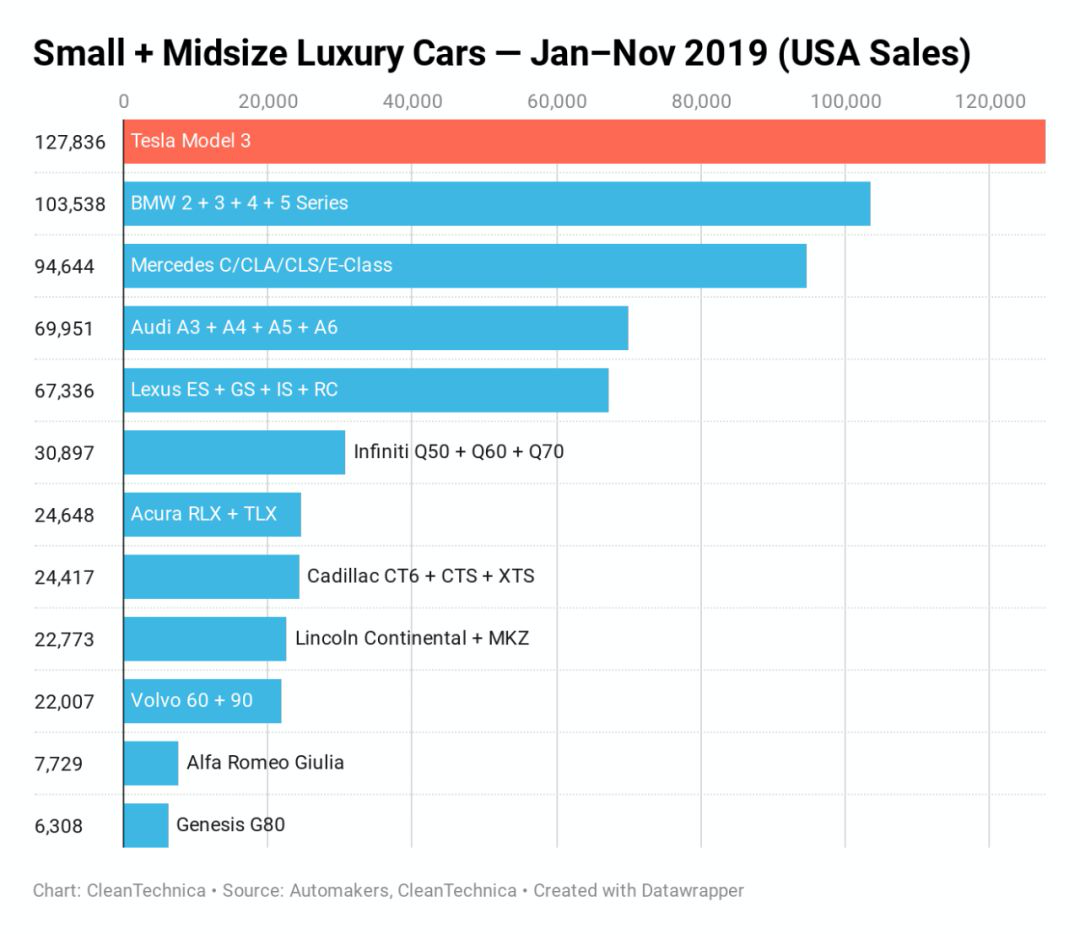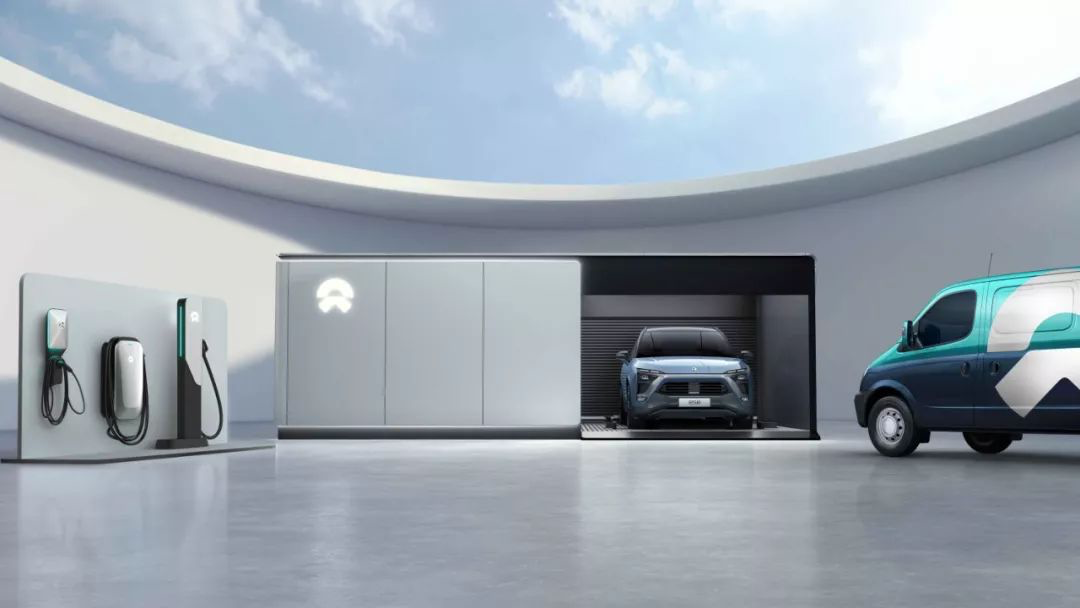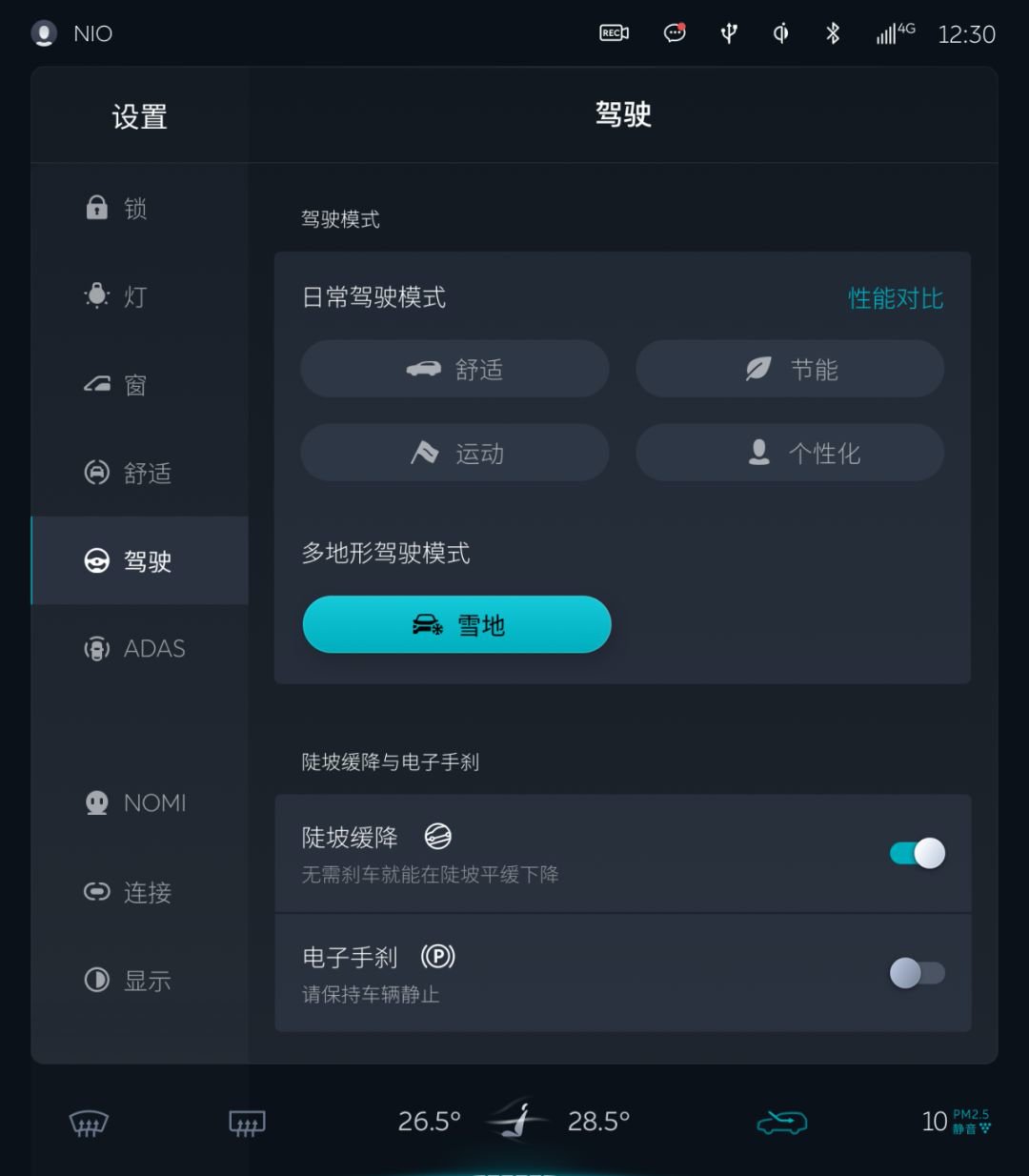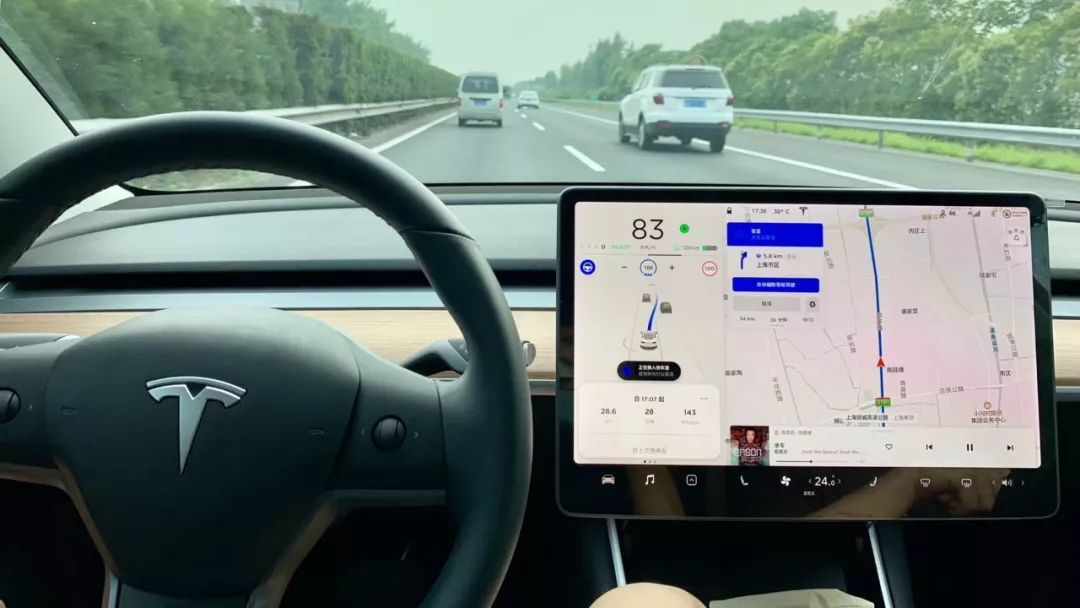Revisiting the Range of Electric Vehicles in 2020
As a tester solely dedicated to the range of electric vehicles, I noticed a significant increase in fatigue and time investment towards testing as the year progressed. More importantly, users’ interest in the range of electric vehicles has decreased, resulting in minimal significance in conducting range tests.
Early 2019, Tesla introduced the Model 3 Long Range RWD Edition capable of reaching 664 km on a single charge according to NEDC specifications, followed by the Model S equipped with a new motor.
In September 2019, GAC New Energy unveiled Aion LX, the first domestically produced electric vehicle to hit a range of 600 km.
On December 28, 2019, NIO announced its new 100 kWh battery during the NIO Day event. The upgrade allowed the ES6 and EC6 models to exceed 600 km while maintaining NEDC standards, and the NEDC range of the ES8 reached 580 km, making it the SUV with the longest range to date.
With more electric vehicles boasting NEDC ranges of over 600 km, the era of the “range anxiety” will move forward, creating a time where users can truly enjoy the impressive driving experience of intelligent electric vehicles.
Larger Battery, Longer Range
The source of range anxiety for electric vehicle drivers stems from a vehicle’s single-charge capability and the supporting energy replenishment system.
Early 2019, most electric vehicles could only achieve a range of approximately 400 km on a single charge, with a battery energy density of 140-160 Wh/kg. However, thanks to the dropping prices of power batteries and the continuous improvement of energy density, an increasing number of electric vehicles have been utilizing larger battery capacities to achieve NEDC ranges of over 500 km, and some even exceed 600 km.
NIO is worth mentioning because they insist on adoptable battery designs, which allows even their earliest models, such as the ES8 released in 2018, to increase its NEDC range to 500 km when upgraded with a 100 kWh battery using the exchangeable battery system. In addition, the ES6 released in 2019 can reach a range of 600 km.
For every NIO owner, the development of battery technology can be experienced first-hand through these advancements in vehicles.
To conclude, let me share a quick story.On last Friday, Tesla’s first V3 Supercharger was officially opened. During the test of the charging speed of V3, I had a chat with two Tesla Model 3 owners next to me. One was a long-range all-wheel-drive version owner and the other was an imported standard range upgrade version owner.
The standard range upgrade version owner kept asking us how far the long-range version could go. When we told him that it could run more than 500 kilometers in the city, he regretted buying the standard range version a little. The range displayed on the full charge meter was 380 km, which was actually only about 300 km after deducting the errors.
It’s fine for daily use. Although he doesn’t have a home charger, he can charge at work and it’s still relatively convenient. But he still worries about long-distance travel. He previously planned to drive to Hunan, but gave up because of range anxiety. He should have spent a few more thousand yuan to buy the long-range version. It would have made little difference.
For many car owners, is NEDC range of over 400 kilometers enough? It’s enough for the city, but not for long-distance travel.
Is it necessary to spend an extra 40,000 to 50,000 yuan to meet the 10% of the demand annually for a long-range version? For other car models, I think it’s necessary, but not for NIO.
At the 2019 NIO Day, Li Bin mentioned a concept of Battery as a Service, which means upgrading the battery on demand.
Thanks to NIO’s battery swapping system, most car owners can purchase the 70 kWh version of the car, which, combined with a home charger, is sufficient to meet 90% of urban commuting needs. If there is a need for long-distance travel, users can rent and swap for the 100 kWh battery.
Is over 600 km of NEDC range enough for the more demanding people?
The NEDC range of the long-range rear-wheel-drive version of Model 3 is 664 kilometers. The actual range in urban road conditions when fully charged is about 550 kilometers. Most users’ daily commutes are basically within 50 kilometers. Even if there is no home charger, it’s still possible to charge only once a week with a bit of error.
As for highway driving, this is the energy consumption that I calculated while driving at 120 km/h with the air conditioning on and a full load.Even in high-speed driving conditions, pure electric vehicles with NEDC range exceeding 600 km can achieve continuous driving of more than 400 km. Calculated according to the average speed of 100 km/h or more in the eyes of most ETC netizens on expressways, it takes four hours to run 400 km of range. If you take a half-hour break every four hours and charge at a high-quality fast charging station, this time is sufficient to replenish 70% of the range.
Moreover, according to our survey on the 42nd garage mini-program, 42.26% of users will consider purchasing pure electric vehicles after the NEDC range exceeds 500 km, and 30% of users believe that the NEDC range needs to be greater than 600 km or 650 km to consider purchasing a pure electric vehicle.
Some friends also commented that after the range can meet their needs for one week of charging, they can accept pure electric vehicles.
Therefore, when the NEDC range of electric vehicles exceeds 600 km, whether it is urban road conditions or highway conditions, the single range of electric vehicles has been very close to that of fuel vehicles, which has dispelled range anxiety for most users.
Of course, relying solely on the improvement of vehicle range is not enough to enter the era of range anxiety elimination. A perfect energy replenishment system is also a crucial part.
In terms of energy replenishment system, Tesla and NIO have absolute advantages. Since its official delivery in 2017, Model 3 has continuously broken many records in sales in the United States. From January to November this year, the cumulative delivery of Model 3 in the United States exceeded 127,000 vehicles, which is far more than the second place, nearly tripled, and even more than the total sales of A4, 3 Series, and C-Class.
The driving experience of Model 3, leading intelligent control over A4, 3 Series, and C-Class, as well as enough range to meet driving needs, are all important. Equally important is the use environment of U.S. users and Tesla’s Supercharger network layout.
Most car owners in the United States have their own garages and can install home chargers to meet their daily travel needs, while Tesla has a comprehensive Supercharging system for long-distance travel.Up to now, the United States has opened 748 supercharging stations, which are not only numerous and evenly distributed, but also covering several transcontinental highways across the country. Combined with the fast charging speed and good experience of supercharging, it can be said that Tesla has not only entered the era of long-distance travel in the United States, but even has entered the era of no range anxiety.

In China, although the number of public charging piles has far exceeded that of the United States, the problems of slow charging speed, poor user experience, and difficulty in finding and charging piles have been a major obstacle to the development of electric vehicles.
With the advent of long-distance travel era, the main contradiction of electric vehicles has gradually shifted from range anxiety to charging anxiety, and how to solve the charging problem is the key.
NIO is ahead of everyone in this regard.
NIO has not only introduced one-button charging service, mobile charging vehicles, battery swap stations, and self-owned supercharging piles of the brand, but also integrated 280,000 third-party charging piles into one APP.

In terms of charging experience, NIO exceeds all domestic pure electric vehicle brands. As for whether NIO can guarantee the quality of its services with the increase in sales volume, Qin Lihong, co-founder and president of NIO, responded in an interview after the NIO Day:
“Our service comes first. Even if we don’t do anything now, we can expand our ownership twice. So everyone doesn’t have to worry about this. The actual problem we encountered in 2019 was financial pressure, because the market was slightly optimistic about this year after the past two years. Our investment in services was a little too much, so the financial pressure was a bit high. But what we need to do now is definitely not to retreat, but to wait for the increase in ownership after improving our service system.
So, what we need for NIO’s service system now is not to worry about insufficient service capacity. We need to continuously pay attention to the input-output ratio and move our service from two steps ahead to one step ahead and then to half a step ahead. After all, services come first.”
Moreover, for NIO, with the increase in sales volume, the scale effect gradually emerges, and the previously invested in services will be rewarded.
In the era of long-distance travel, let us enjoy the advantages of intelligent electric vehicles
After solving the range anxiety of both vehicles and charging system, we will enter the late stage of long-distance travel era.
In the era of long-distance travel, the advantages of intelligent electric vehicles can finally be fully reflected.
I have encountered many friends who use gasoline cars, but after purchasing a Tesla or a NIO, they prefer to drive electric cars. Even if there is a need for long-distance travel, they are more inclined to choose electric cars, despite some range anxiety.
The reasons are simple: easy to drive, intelligent, and cost-efficient.
- Easy to drive
Regarding the ease of driving, I think there is no need for much explanation. The electric motor has a faster response speed in the initial stage, and the acceleration during driving is smoother, with no vibration or noise from the internal combustion engine.
Moreover, you can buy a more powerful motor at a cheaper price, just like the new ES8 recently released at NIO Day. At a price of 470,000 yuan, you can buy a mid-sized SUV with 544 horsepower, and the acceleration from 0 to 100 km/h is only 4.9 seconds. If you compare this parameter to gasoline cars, it would be a challenge to find a suitable option at twice the price.
In the latest update, NIO’s snow mode function obtained a 50:50 power output control via software, which is a practical function that gasoline cars require a central differential lock to achieve. For users in the north, this is a very practical feature.

Therefore, for many car owners, it is difficult to go back to driving gasoline cars once they have become accustomed to the high-quality driving experience of electric cars.
- Intelligent
Is intelligence the unique advantage of an electric car?
No.
Are there any gasoline cars that are doing well with intelligence?
No.
If you do not do this, this is currently the advantage of an electric car.
The advantages of intelligence are mainly reflected in three aspects: the car system, auxiliary driving, and mobile APP.
First, let’s talk about the car system.
If we say which domestic car system is the best, let us be modest and say that NIO’s car system can be ranked in the top three.
On the one hand, the basic functions of NIO’s car system are rich enough. Entertainment functions, such as QQ Music, Himalaya, Baidu Maps, and iQiyi, are all available. On the other hand, NIO does not simply move several APPs to the car system, but they have deeply integrated the car system. Therefore, the system operates more smoothly, the layout of the buttons is more reasonable, and, coupled with the easy-to-use voice system, the overall experience is far better than most car systems that use big screens just to have a big screen, which are found in gasoline cars.
In addition, NIO and Tesla support OTA for the entire vehicle, which means the car system has a growth plot. Every update brings new features and new experiences.
Next, let’s discuss auxiliary driving.
Although many gasoline cars are also gradually equipped with auxiliary driving, these new forces of car-makers lead the way on this step.No matter it is Tesla’s Autopilot or NIO’s NIO Pilot, they can greatly reduce the fatigue of drivers on long-distance, high-speed driving.

This is also the reason why so many Tesla and NIO owners are willing to drive electric cars even if they have range anxiety.
The second advantage is the mobile APP.
The mobile APP is an advantage that is hard to feel without personal experience, especially when comparing two cars.
Without the mobile APP, you have to endure the heat and coldness when you just get on the car every summer and winter.
When you can control the air conditioner remotely, you worry about fuel consumption, idling and carbon deposits, and you don’t want to use it.
In an electric car that can be controlled through a mobile APP, every time you get in the car, you can enjoy a comfortable temperature. This experience is hard to give up once you get used to it.
- Save money
Finally, there is a big advantage of electric cars: saving money.
Many of my electric car owner friends have a common feature, that is, the mileage of the vehicle is much longer than when driving a fuel vehicle.
Good driving experience is one reason, but more importantly, it saves money. For a car with a power consumption of 20 kWh per 100 km, under the condition of an electricity fee of 0.5 yuan/kWh, the cost per kilometer is only 0.1 yuan, while it is hard for the same level fuel cars to reach 0.8 yuan/km or 1 yuan/km.
In conclusion:
I am a range advocate, and I believe that the range of a vehicle is the core indicator of a car, just like the number “1”, and all the good experiences and intelligence brought by electric cars are the following “0”. Only with “1” first can the following “0” have meaning.
As more and more electric cars reach a range of 600 km and the energy supplement system becomes more perfect, the biggest pain point of electric cars, range anxiety, will become smaller and smaller. After we don’t have range anxiety, let us enjoy the excellent experience of intelligent electric cars to the fullest.
This article is a translation by ChatGPT of a Chinese report from 42HOW. If you have any questions about it, please email bd@42how.com.
